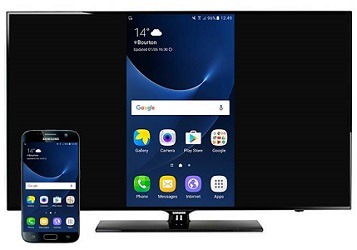How to use Samsung Screen Mirroring
Screen mirroring gives you the ability to mirror your Samsung device’s content to your TV screen. Follow our quick guide below to open the connection for screen mirroring on both your Samsung smartphone or tablet and your TV.
Getting started
Older Samsung devices or those running on operating systems before Android 4.1.12 may not feature Screen Mirroring. To check, pull down the extended notification menu from your home screen to see if your device has the ‘Screen Mirroring’ or ‘Smart View’ function. If your device does not have the feature, you can still connect via Quick Connect.
Compatible devices
Samsung Galaxy S7, Samsung Galaxy S6, Samsung Galaxy S5, Samsung Galaxy S4, Samsung Galaxy S III , Samsung Galaxy Note II, Samsung Galaxy Note 3, Samsung Galaxy Note 4, Samsung Galaxy Camera, Samsung 8” Galaxy Note, Samsung Galaxy Note 10.1”, Samsung Galaxy Note 10.1″ 2014 Edition.
Preparing your Samsung TV
Method 1:
1) Press the Source button your remote
2) Navigate to the Screen Mirroring source
3) Your TV will now display a screen informing you that it is waiting for your device to be connected. The screen will be displayed until your device is connected. We recommend you have your device on hand as the scan will time out if you haven’t connected your device within 2 minutes.
Method 2:
1) Select Menu on your remote
2) Scroll down to Network & press Select
3) Scroll down to Screen Mirroring and press Select
Preparing your Samsung smartphone
1) Pull down the extended notification menu from your home screen
2) Tap Screen Mirroring
3) Your device will starting scanning for TV’s and other devices that can be used for mirroring. Tap the TV/device that you wish to connect to.
Why use Screen Mirroring?
- You’ll be able to show pictures stored on your tablet or smartphone, offering easy viewing for larger audiences, whether that be colleagues, family or friends.
- Watch videos directly from your external device or from apps.
- Enjoy better sound by playing music through your TV’s speakers instead of your external device’s.

